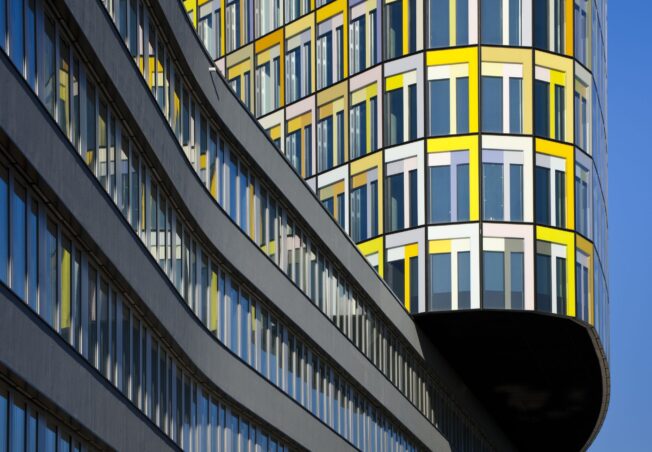Kunstmuseum Stuttgart
The design by Hascher, Jehle & Assoziierte for the new Kunstmuseum Stuttgart on Kleiner Schlossplatz envisaged a cube with a maximally transparent shell. The Berlin architects brought Werner Sobek on board to plan the supporting structure and facade.
The core of the building is a concrete cube. It is clad in Jurassic limestone and encased in a second glass façade. During the day, this glass “skin” reflects the surroundings. At night, it becomes almost invisible due to the interior lighting – a charming interplay between transparency and reflection.
A short film clip shows the glass facade and the glass roof of the art museum.

Interplay Between Transparency and Reflection
The art museum itself consists of the above-ground glass cube and exhibition spaces partly located below ground. They are housed in completely renovated tunnel tubes from the 1960s. The ground floor of the building is free of supports and thus offers the most flexible use possible for lectures, vernissages and room installations. Wall panels on the upper floors provide the necessary stiffening of the supporting structure.
In a short film, our board member Thomas Winterstetter talks about the facade of the art museum.

Transparent Supporting Structure for an Unobstructed View
The transparent roof of the art museum rests on a supporting grid from which the glass facade is also suspended. Horizontal loads on the facade are borne by glass gravity beams. The transparent supporting structure gives the building envelope of the Kunstmuseum an almost dematerialised appearance and allows an unobstructed view of the outside.
Architecture
Hascher, Jehle & Assoziierte, Berlin/Germany
Planning time
1999 − 2002
Construction time
2001 − 2004
Services by Werner Sobek
- Structural engineering (jointly with Fichtner Bauconsult, Stuttgart/Germany) (WP 1 − 6 acc. to § 64 HOAI)
- Facade engineering (WP 1 − 8 acc. to UBF)
GFA
13,000 m²
Client
City of Stuttgart/Germany
Photography
Roland Halbe, Stuttgart/Germany
Brigida Gonzalez, Stuttgart/Germany
Awards
Award for Good Buildings of the BDA Stuttgart 2005
Recognition of German Architecture Award 2005










